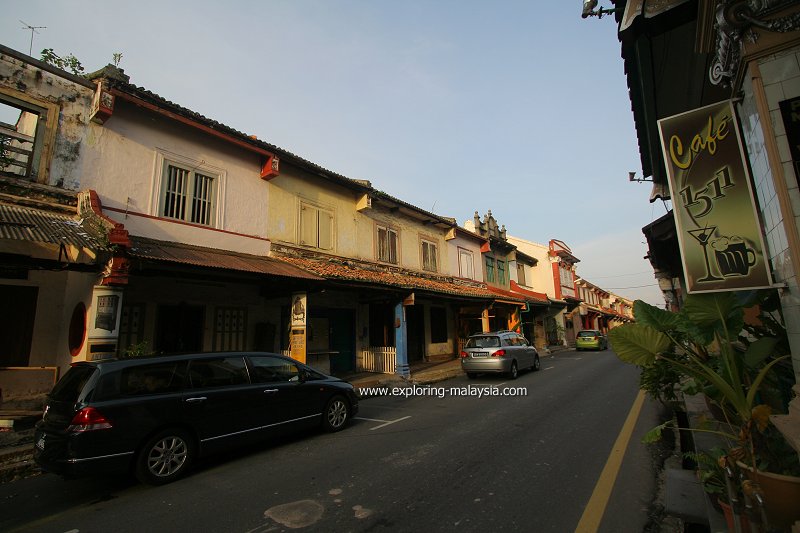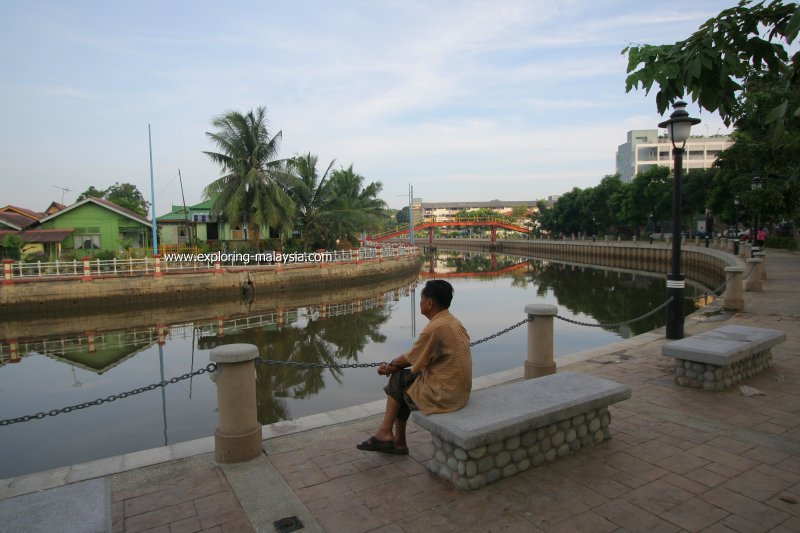Malacca, also spelled Melaka, is the name of a small city as well as an equally small state at the middle part of Peninsular Malaysia. As for the city, Malacca is the oldest and most historial, having been founded in the 15th century, before other bigger cities such as Kuala Lumpur and Penang.
Although there are a few Malaysian cities such are older than Malacca, Muar for example, Malacca is celebrated for the significant role it plays in Malaysian history. It is here, in Malacca, that we can trace the entire Malay history. Indeed, it is through Malacca that we understand what it means to be Malay.
 Heeren Street (30 December 2006)
Heeren Street (30 December 2006)
With such a wealth of history, it is no surprise that Malacca is a major tourist destination, and is destined to be an even more significant one, having been inscribed as a Unesco World Heritage Site on 7 July, 2008.
Much of Malaysian history was played out in Malacca. The city was an important entrepôt under the Malacca sultanates. Although its glory days lasted little more than a century, between 1400 and 1511, it leaves an undelible mark on the country's history.
Many of the royal families of the various states in Malaysia can trace their ancestry to the sultans of Malacca. When the Portuguese defeated Sultan Mahmud, the last Sultan of Malacca, in 1511, it was the last time that Malacca was ruled by a sultan. The fall of Malacca also marked the beginning of Western colonialization that would eventually engulf the entire Malay archipelago. However, it should be noted that the Portuguese and the Dutch after them, never controlled much of the Malay peninsula.
It was only after the Anglo-Dutch Treaty of 1824 that the Malay world was split between these two maritime powers, and it was only as late as 1874 that the British intervened directly in the administration of Malay states, beginning with Larut in Perak, and eventually the whole peninsula.
 View of Kampung Morten (30 December 2006)
View of Kampung Morten (30 December 2006)
The Malacca that we see today is vastly different from the Malacca of even fifty years ago. The most radical makeover took place in the 1990's, when the economic boom of that period propelled a massive, poorly-weighted land reclamation that not only changed the character of Malacca's coastline, but also affected the livelihood of the fishing communities that lives along the shore.
The result of that reclamation is that the traditional coast is extended outwards. Coastal villages inhabited mainly by the descendents of Portuguese soldiers intermarrying with the locals are literally left high and dry, cut off from the sea by a major highway.
Even the historical core of Malacca is not spared the itchy hands of powers-that-be, that have the money but not the taste. For example, there's a tacky windmill at Dutch Square that appears totally out of place against all the historic structures. I can only hope that the World Heritage Site listing will be the impetus for the authorities to exercise greater prudence when deciding what to place in this very historic place.
Discover Malacca
 Map of Roads in Malacca
Map of Roads in Malacca
 Latest updates on Penang Travel Tips
Latest updates on Penang Travel Tips

Copyright © 2003-2025 Timothy Tye. All Rights Reserved.

 Go Back
Go Back